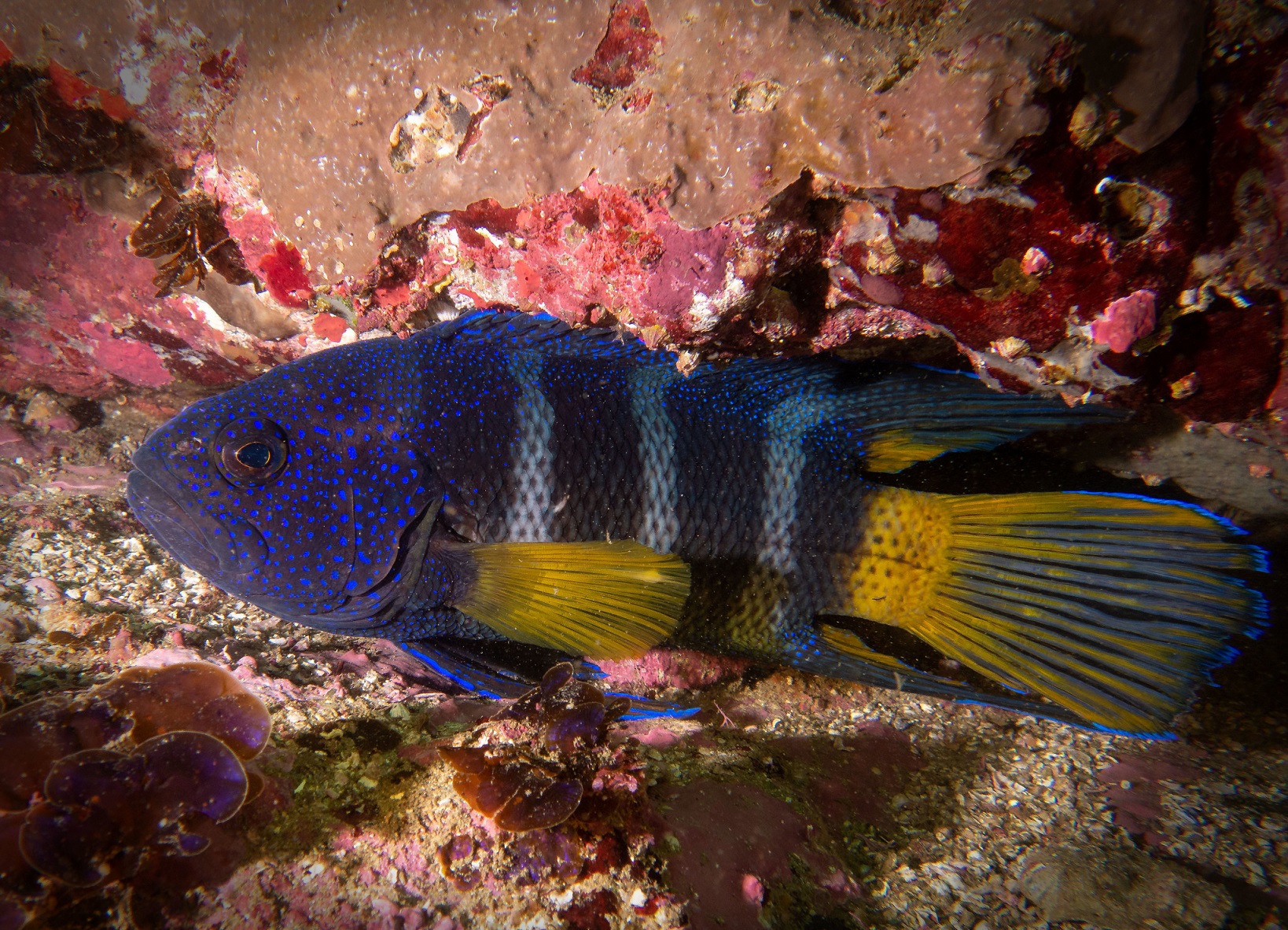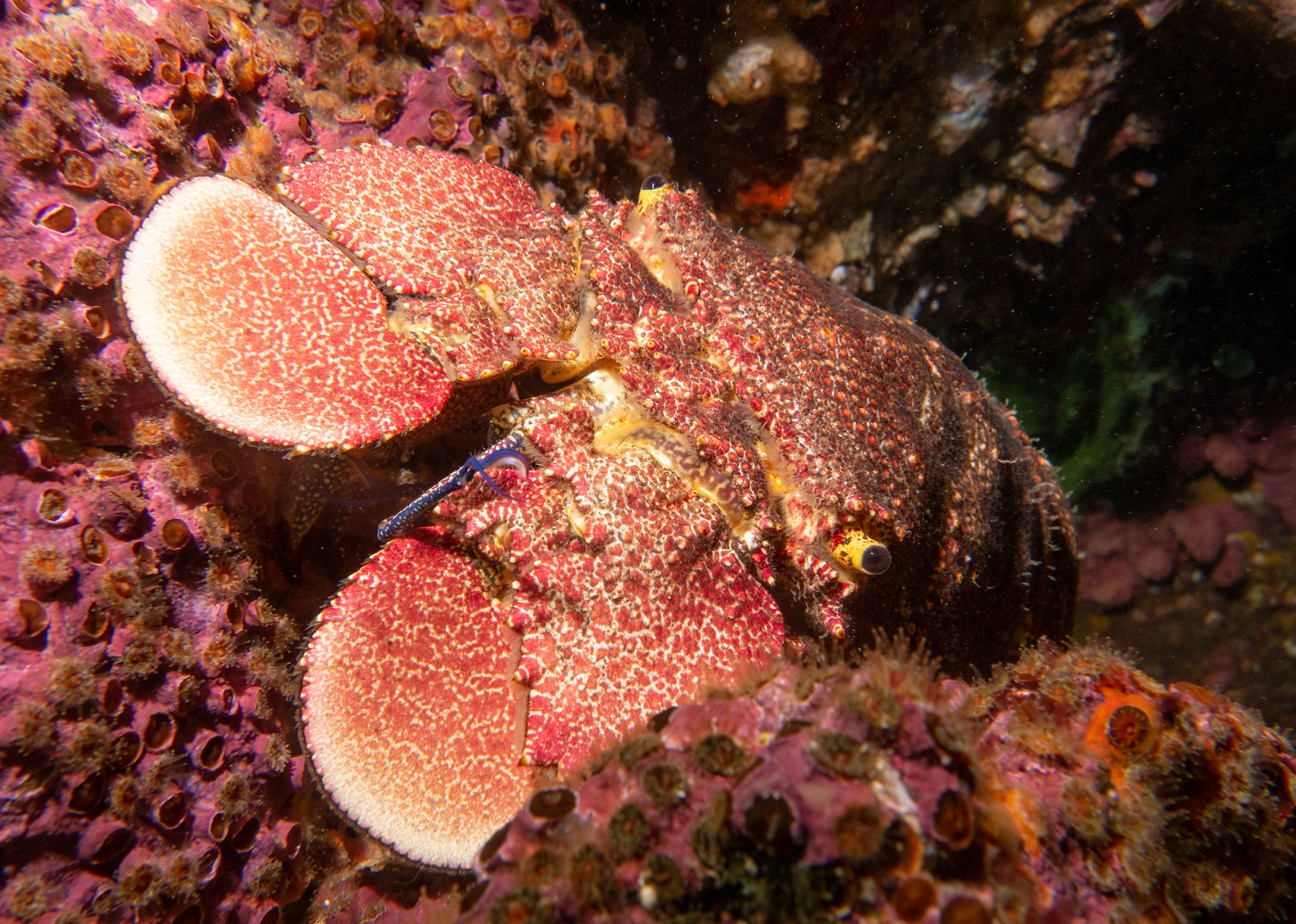Reef Life Survey have been conducting surveys in Jervis Bay since 2008; 557 surveys have been conducted over 59 dive sites, recording 438 species. Like many other sites, Jervis Bay was not surveyed in 2020 during the ‘Lap of Aus’, so in 2021 we had some catching up to do! The team this year consisted of John, Kris, Josh, Sue, Ash, Margo and myself. Brian from South Coast Underwater Diving Academy was our skipper for the trip, and Sue from Crest Diving was providing us with tanks.
John, the New South Wales coordinator was very welcoming. For my first day of dives I was to share a transect with him, so at the end of the day we could compare data and see where I was at. This is important, ensuring that when a diver becomes RLS certified, their data is to standard.

On our first day of diving, we were lucky enough to have minimal winds, allowing us to head outside the bay to a site called Drum and Drumsticks. Above water, this site towers out of the ocean as three columns of epic rock formation. Underwater, it turns into a boulder field with crevices and drop offs. The first thing that struck me was, where is all the kelp?! Where do I tie my reel onto if there is no kelp?! Not in South Australia any more!
We completed both our surveys for the day here, on the north and south side of Drum and Drumsticks. Here we had visits from Australian Fur Seals (Arctocephalus pusillus), a Fiddler Ray (Trygonorrhina fasciata) and a Banded Wobbegong (Orectolobus halei) who decided to swoop in and lie on our transect tape!
That evening, John gave a community seminar about the diversity of Jervis Bay and the history of RLS in the bay. It was great to see so many locals come along already with an interest in the bay and a desire to protect it.
We came back to our accommodation with pizza in hand to help us through data entry. John and I compared data and we found I needed to shift my fish sizing up to make my data more realistic. Apart from that, I was happy to see that my species count was consistent with his! The following day I was to have my own transect and collect data to contribute to RLS!

On day 2 we surveyed Dart Point and The Docks. Both had big rock ledges that kept going deeper and deeper. I was excited to hear that Dart Point had some soft corals to find on the rock ledges. There was also a friendly Green Moray (Gymnothorax prasinus) at The Docks.
By days 3 and 4, we were surveying sites that provided us with the most shelter from the increasing winds. They were full of sea grass and kelp, providing lots of space for searching for cryptics . The most notable were Yellow-creasted weed fish (Cristiceps aurantiacus) and Kapala Stingaree (Urolophus kapalensis). Some uncommon and new species in Jervis Bay were a Shoulder-blade sea cat (Dolabella auricularia), Blunt Slipper Lobster (Scyllarides squammosus), and a Football seacumber (Cladolabes perspicillum).
On my dive at Captain’s Point, I was searching through the kelp during method 2, and swam head first into a spotted wobbegong (Orectolobus maculatus) lying right on top of my tape. I sized him at about 1.80m! and continued on rather cautiously.
Thank you John for organising a great RLS trip and helping me become an RLS diver. And a big thank you to Jamie and Danny for all the training trips in SA. See you on transect soon!
